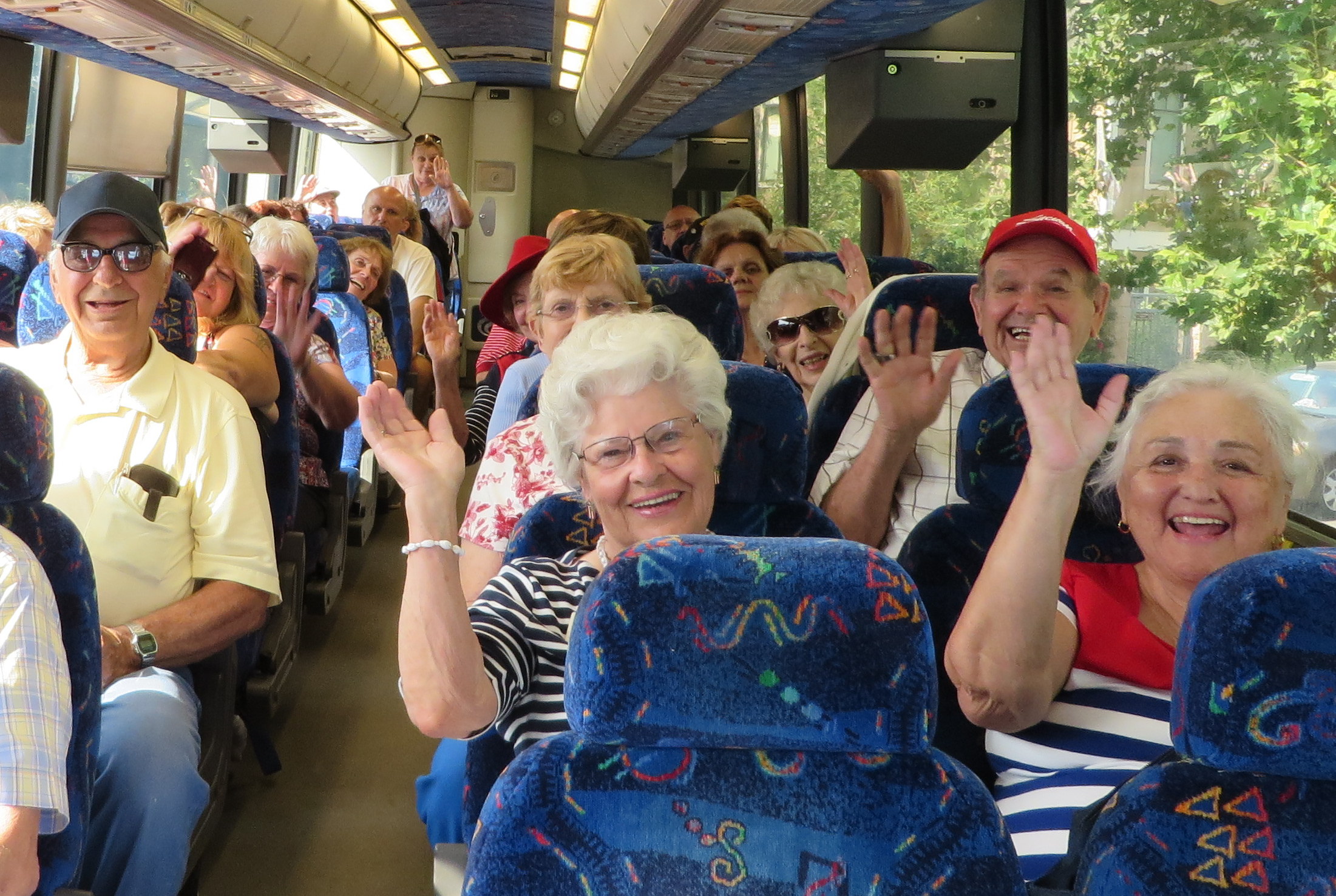Senior travel groups offer a unique blend of adventure, relaxation, and social connection. These organized trips cater to the specific needs and preferences of older adults, providing a safe and enjoyable way to explore new destinations and cultures. Whether you’re seeking an adventurous hiking expedition in the Rockies or a relaxing cruise through the Caribbean, there’s a senior travel group designed to match your interests and physical capabilities. This exploration delves into the various types of groups available, the planning process, and the numerous benefits of group travel for seniors.
From carefully curated itineraries to accessible accommodations and transportation, senior travel groups prioritize the comfort and well-being of their participants. This comprehensive guide will cover everything you need to know about planning and participating in a senior travel group, helping you choose the perfect adventure for your next chapter.
Types of Senior Travel Groups
Senior travel groups cater to a diverse range of interests and preferences, offering enriching experiences tailored to the specific needs and desires of older adults. The variety ensures there’s a perfect fit for everyone, from adventurous explorers to those seeking relaxation and rejuvenation. Choosing the right type of group depends largely on individual preferences for activity level, travel style, and desired destinations.
Types of Senior Travel Groups and Their Characteristics
The following table outlines several common types of senior travel groups, highlighting their unique features and target audiences. These categories are not mutually exclusive; some trips may blend elements from multiple types.
| Type of Group | Description | Activities & Destinations | Typical Age Range & Fitness Level |
|---|---|---|---|
| Adventure Travel | Focuses on physically active exploration and challenging experiences. | Hiking in national parks (e.g., Yosemite, Banff), kayaking or canoeing expeditions, wildlife safaris in Africa or South America, trekking in the Himalayas (less strenuous options available). | Generally 55-75, moderate to high fitness level required. Options for varying levels of difficulty are usually available. |
| Cultural Tours | Emphasizes immersion in the history, art, and traditions of a specific region or country. | Museum visits (e.g., Louvre, Metropolitan Museum of Art), historical site explorations (e.g., Roman Colosseum, Machu Picchu), cooking classes, attending local performances, exploring ancient ruins. Destinations often include Europe, Asia, and South America. | Generally 50-80+, fitness level can vary depending on the specific itinerary. Many tours offer options for reduced walking or physical exertion. |
| Relaxation & Wellness Tours | Prioritizes rest, rejuvenation, and stress reduction. | Spa treatments, yoga and meditation sessions, leisurely sightseeing, beach time, cruises to tranquil destinations (e.g., Caribbean, Mediterranean). Destinations often include beach resorts, wellness centers, and cruise ships. | Generally 55-85+, fitness level can be low to moderate. Focus is on comfort and relaxation. |
| Educational Tours | Combines travel with learning opportunities, often focusing on a specific subject or theme. | Lectures by experts, workshops, visits to relevant sites, interactive experiences. Destinations vary widely depending on the theme, for example, a tour focusing on ancient civilizations might visit Greece and Egypt, while one on wine might explore the vineyards of France or Italy. | Generally 50-75+, fitness level varies depending on the itinerary. Walking tours and other physical activities may be included, but usually at a moderate pace. |
Activity Levels and Fitness Considerations
Many senior travel groups offer different activity levels within a single tour type. For instance, an adventure travel group might offer both strenuous hikes and gentler nature walks to cater to varying fitness levels. It’s crucial to carefully review the itinerary and activity descriptions before booking to ensure the trip aligns with one’s physical capabilities. Many companies offer detailed descriptions of the physical demands of each activity. Travelers should honestly assess their own fitness levels and choose a trip that matches their abilities to ensure a safe and enjoyable experience.
Planning a Senior Travel Group Trip
Planning a memorable and safe group trip for senior travelers requires careful consideration of various factors. Successful trips hinge on meticulous organization, prioritizing accessibility, and ensuring the well-being of all participants. This section details the process of planning such a trip, including sample itineraries, accommodation and transportation choices, and crucial safety considerations.
Sample 7-Day Itinerary: Charleston, South Carolina
This itinerary focuses on Charleston, South Carolina, a city rich in history and culture, offering manageable walking distances and numerous accessible attractions.
Day 1: Arrival in Charleston. Check into a centrally located, accessible hotel (e.g., The Vendue, known for its accessibility features). Afternoon: Relaxation and orientation walk along the waterfront, taking in the historic architecture. Evening: Welcome dinner at a restaurant with easy access.
Day 2: Morning: Guided walking tour of Charleston’s historic district, focusing on key landmarks like Rainbow Row and the Charleston City Market. Afternoon: Free time for shopping or exploring at your own pace. Evening: Enjoy a Lowcountry-style dinner.
Day 3: Morning: Visit Fort Sumter, accessible by ferry (ensure ferry accessibility is confirmed beforehand). Afternoon: Relax by the pool or explore the hotel amenities. Evening: Attend a historical reenactment or enjoy live music at a local venue.
Day 4: Morning: Visit Magnolia Plantation & Gardens, which offers accessible pathways and trams. Afternoon: Relaxation or optional afternoon tea. Evening: Free time for individual exploration.
Day 5: Day trip to Boone Hall Plantation, known for its beautiful avenue of oaks and accessible features. Enjoy a leisurely lunch at the plantation. Evening: Enjoy a casual dinner.
Day 6: Morning: Visit the Charleston Museum, which offers accessible entry and exhibits. Afternoon: Shopping or exploring local art galleries. Evening: Farewell dinner at a fine-dining restaurant.
Day 7: Departure from Charleston.
Accessible Accommodations and Transportation
Choosing accessible accommodations and transportation is paramount for a comfortable and safe trip. Hotels should offer features such as ramps, elevators, wide doorways, roll-in showers, and grab bars. Transportation options should include accessible vehicles (e.g., wheelchair-accessible vans or buses) for group transfers and excursions. Pre-booking and confirming accessibility features are crucial. Consider using reputable travel agencies specializing in senior travel to ensure seamless arrangements.
Essential Health and Safety Considerations
Prioritizing the health and safety of senior travelers is crucial. This includes:
Before the trip:
- Ensure all participants have necessary travel insurance, including medical coverage.
- Collect updated medical information from each participant, including medication lists and any allergies.
- Arrange for any necessary medical equipment or supplies.
- Brief participants on safety procedures and emergency contacts.
During the trip:
- Maintain a detailed itinerary and share it with participants and emergency contacts.
- Schedule regular check-ins with participants to monitor their well-being.
- Ensure sufficient rest periods are built into the itinerary.
- Provide access to medical assistance if needed.
- Consider carrying a first-aid kit and familiarizing at least one group member with basic first aid.
Benefits of Group Travel for Seniors
Group travel offers a unique blend of convenience, social interaction, and peace of mind, making it an attractive option for seniors seeking enriching travel experiences. It addresses many of the challenges associated with independent travel while providing significant emotional and social benefits that contribute to overall well-being.
For many seniors, travel can be a source of rejuvenation and personal growth. However, concerns about safety, logistical complexities, and the potential for loneliness can deter independent travel. Group travel elegantly sidesteps many of these obstacles, creating a supportive environment where seniors can explore new places and forge new connections with like-minded individuals. The social and emotional benefits are particularly noteworthy, helping to combat isolation and promote a sense of community.
Social and Emotional Advantages of Group Travel
Group travel provides unparalleled opportunities for social interaction and connection, which are crucial for maintaining mental and emotional well-being, especially for seniors who may experience increased loneliness or social isolation. The shared experiences, from sightseeing excursions to meals and evening activities, create a natural environment for building friendships and fostering a sense of belonging. The structured nature of group trips eliminates the pressure of planning and allows participants to focus on engaging with their fellow travelers, leading to lasting bonds and enriched social networks. This can be particularly beneficial for those who may feel hesitant to travel alone or lack a robust social support system at home.
Group Travel versus Independent Travel: A Comparison of Convenience and Safety
Comparing group and independent travel for seniors reveals distinct advantages in convenience and safety. Independent travel, while offering flexibility, requires extensive planning, including booking flights, accommodation, and tours. This can be challenging and potentially overwhelming for some seniors. In contrast, group travel handles the logistical aspects, leaving participants free to relax and enjoy the journey. The pre-arranged itineraries and support from tour guides provide a significant advantage, particularly in unfamiliar destinations. Furthermore, group travel often offers enhanced safety features, including group transportation and readily available assistance from tour leaders should any problems arise. The shared responsibility inherent in group travel contributes to a greater sense of security.
Potential Drawbacks of Group Travel and Mitigation Strategies
While group travel offers numerous advantages, potential drawbacks exist that can be effectively mitigated with careful planning and communication. One potential concern is the lack of flexibility in itineraries. Group trips follow a set schedule, which might not cater to individual preferences. However, many tour operators offer options for independent exploration within the group’s itinerary, allowing for a balance between structured activities and personal freedom. Another potential drawback is the possibility of incompatibility with fellow travelers. Thorough research of tour operators and reading reviews can help identify groups with shared interests and travel styles. Finally, the pace of some group trips may not suit everyone. Choosing a tour with a manageable itinerary and clearly defined activity levels can address this concern.
Accessibility and Inclusivity in Senior Travel
Ensuring accessible and inclusive travel experiences for seniors is paramount. A well-planned trip considers the diverse physical abilities and health needs of older adults, fostering a positive and enjoyable experience for everyone. This section details crucial considerations for creating accessible travel arrangements and suggests strategies for customizing trips to meet individual needs.
Accessibility Features for Senior Travelers
Creating accessible travel experiences requires careful consideration of various factors. The following table outlines key accessibility features categorized for easy understanding. Remember that specific needs vary greatly, so always consult with individual travelers to personalize their journey.
| Transportation | Accommodation | Activities & Excursions |
|---|---|---|
| Wheelchair-accessible vehicles, buses, and trains; airport assistance services; clear signage and announcements; ample space for maneuvering; accessible restrooms on transportation. | Wheelchair-accessible rooms; grab bars in bathrooms; ramps or elevators; roll-in showers; adjustable beds; emergency call systems; accessible dining areas. | Accessible pathways and entrances; modified activity options (e.g., shorter walking tours, alternative transportation); provision of assistive devices (e.g., wheelchairs, walkers); consideration of pacing and rest breaks. |
Suitable Destinations and Activities for Seniors with Limited Mobility
Many destinations and activities are inherently more accessible than others. Choosing locations with well-maintained infrastructure, manageable terrain, and readily available support services is crucial.
Examples of suitable destinations include cities with good public transportation (like Amsterdam or San Francisco, which offer accessible trams and buses), coastal towns with gentle slopes and paved walkways (such as Carmel-by-the-Sea, California, or coastal towns in Maine), and resorts specifically designed for seniors with accessible amenities.
Activities could include scenic train journeys, boat tours, visits to museums with accessible entrances and elevators, and relaxing spa treatments. Cruises can also be a good option, offering a variety of accessible onboard activities and shore excursions. Remember that even seemingly simple activities should be tailored to individual fitness levels.
Customizing Travel Experiences for Diverse Needs
Adapting travel itineraries to accommodate varying needs is essential for creating a truly inclusive group experience. This may involve offering a range of activity options, providing personalized support, and establishing clear communication channels.
For instance, a group trip might include both longer and shorter walking tours, offering alternatives for those with limited mobility. Pre-arranged transportation to specific locations can minimize walking distances. The itinerary could also incorporate rest periods and flexible scheduling to accommodate individual needs. Providing clear and consistent communication regarding the itinerary, accessibility features, and support services ensures everyone feels informed and comfortable. Consider pre-trip questionnaires to gather information about individual needs and preferences, allowing for proactive planning and personalized support. This allows for a more inclusive and enjoyable travel experience for all.
Cost and Budgeting for Senior Travel Groups
Planning a senior travel group trip requires careful consideration of the financial aspects to ensure a smooth and enjoyable experience for all participants. A well-structured budget, developed collaboratively with the group, is crucial for managing expectations and avoiding unexpected expenses. This section outlines strategies for budgeting, cost-effective options, and managing group finances.
Sample Budget Breakdown for a Senior Travel Group Trip
A comprehensive budget should encompass all anticipated costs. The following example illustrates a potential breakdown for a seven-day trip for a group of ten seniors traveling to a moderately priced destination within the United States. These figures are estimates and will vary depending on the chosen location, time of year, and specific preferences.
| Expense Category | Estimated Cost per Person | Total Group Cost |
|---|---|---|
| Transportation (Flights/Bus/Train) | $500 | $5000 |
| Accommodation (Hotel/Resort – Double Occupancy) | $700 | $7000 |
| Activities and Entrance Fees (Tours, Museums, etc.) | $300 | $3000 |
| Meals (Breakfast, Lunch, Dinner) | $400 | $4000 |
| Miscellaneous Expenses (Souvenirs, Tips, etc.) | $100 | $1000 |
| Total Estimated Cost per Person | $2000 | $20000 |
Strategies for Managing Costs and Finding Cost-Effective Options
Several strategies can help manage costs without sacrificing quality. Choosing off-season travel dates, for example, can significantly reduce accommodation and flight costs. Consider destinations with lower overall costs of living, and explore options like renting vacation homes or utilizing Airbnb for accommodation, potentially offering more space and kitchen facilities for cost savings on meals. Look for free or low-cost activities, such as walking tours, picnics in parks, or visiting free museums on specific days. Bulk purchasing of tickets for attractions can also lead to discounts. Finally, encourage participants to pack light to avoid checked baggage fees.
Different Payment Options and Strategies for Managing Group Finances
Several methods exist for managing group finances. A designated treasurer can collect payments and maintain meticulous records. Online payment platforms can streamline the process, allowing for secure transactions and easy tracking of payments. A shared spreadsheet can provide transparency and allow participants to track their payments and the group’s overall financial status. Consider using a travel agency specializing in senior group travel; they often handle payments and logistics efficiently. Clear communication regarding payment deadlines and methods is essential to avoid delays or confusion. A written agreement outlining payment schedules and responsibilities will further protect all parties involved.
Illustrative Examples of Senior Travel Group Experiences
Choosing the right senior travel group experience depends heavily on individual preferences and desired level of activity. This section provides detailed examples of diverse travel experiences designed to appeal to a range of senior travelers. Each example highlights specific locations, activities, and the overall atmosphere to illustrate the variety available.
A Relaxed Coastal Cruise in the Mediterranean
This itinerary focuses on a leisurely pace, allowing ample time for relaxation and exploration. The cruise visits picturesque ports in Italy, Greece, and Croatia. Days are filled with gentle sightseeing excursions, optional shore activities like leisurely walking tours of charming towns, and opportunities to enjoy the ship’s amenities, such as spa treatments and onboard entertainment. Evenings feature elegant dinners and live music.
“The highlight was undoubtedly the sunset cruise in Santorini, with its breathtaking views of the caldera. The whole experience felt incredibly peaceful and rejuvenating.”
This experience is ideal for seniors who value comfort, relaxation, and cultural immersion at a moderate pace. It suits those with a moderate level of mobility and those seeking a social yet less strenuous travel experience.
An Active Adventure Tour in National Parks
This tour focuses on exploring the stunning natural beauty of national parks in the American Southwest. Activities include guided hikes (with varying difficulty levels to accommodate different fitness levels), scenic drives, ranger-led talks, and visits to historical sites. Accommodation is in comfortable lodges and hotels near the parks.
“The sunrise hike to Angels Landing in Zion National Park was an unforgettable experience. The views were simply spectacular, and the sense of accomplishment was incredible, even for those of us who are not avid hikers.”
This trip is perfect for active seniors who enjoy the outdoors and are comfortable with moderate to strenuous physical activity. It is particularly appealing to those with an interest in nature, history, and photography. A good level of fitness is recommended.
A Cultural Immersion Tour of Japan
This tour provides a deep dive into Japanese culture, history, and traditions. It includes visits to ancient temples and shrines, traditional tea ceremonies, calligraphy workshops, and opportunities to interact with local artisans. The tour also incorporates visits to bustling cities like Kyoto and Tokyo, as well as quieter, more rural areas. Accommodation is in a mix of traditional Ryokans (Japanese inns) and modern hotels.
“The experience of staying in a Ryokan and participating in a traditional tea ceremony was truly magical. It gave us a unique insight into Japanese culture and hospitality.”
This trip is best suited for seniors with an interest in history, culture, and art. It is ideal for those who enjoy a mix of structured activities and free time for independent exploration. A moderate level of mobility is required, but the pace is generally relaxed.
Final Conclusion
Ultimately, senior travel groups provide a valuable opportunity for older adults to experience the world in a supportive and enriching environment. By addressing the specific needs and preferences of this demographic, these groups promote social interaction, combat loneliness, and encourage exploration. Careful planning, a focus on accessibility, and a commitment to safety and well-being are key to creating memorable and fulfilling travel experiences for seniors. Whether it’s the camaraderie of fellow travelers, the discovery of new cultures, or the simple joy of relaxation, the rewards of joining a senior travel group are numerous and far-reaching.




